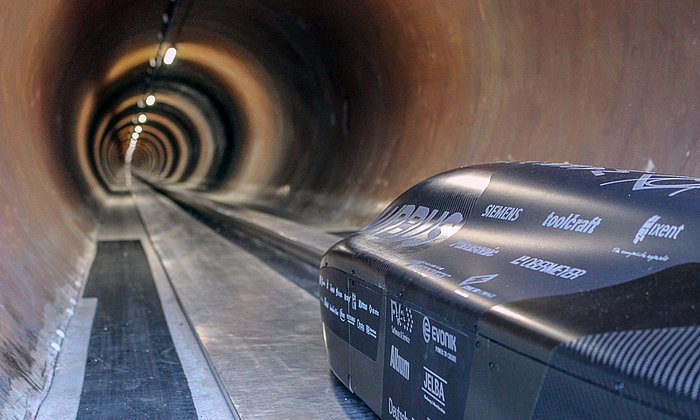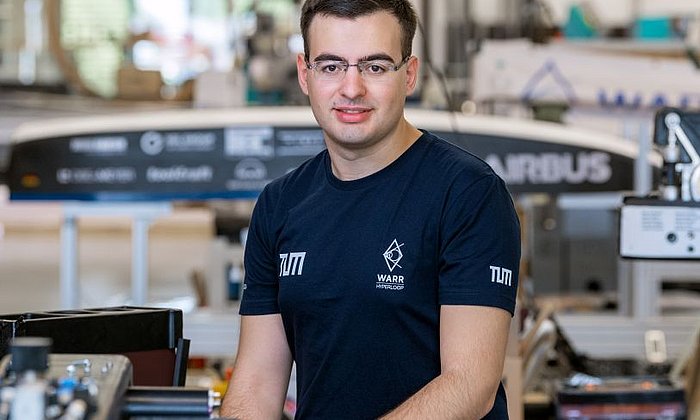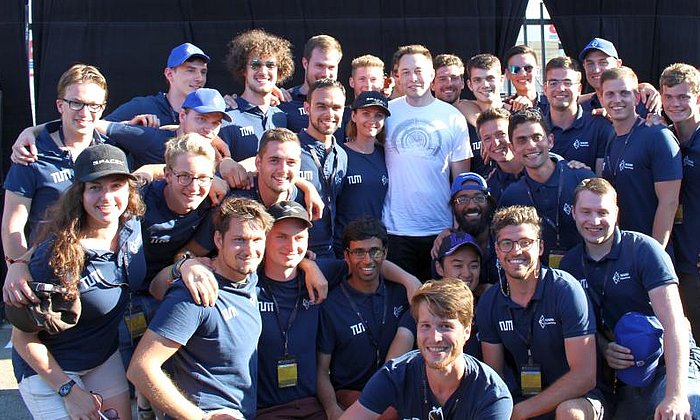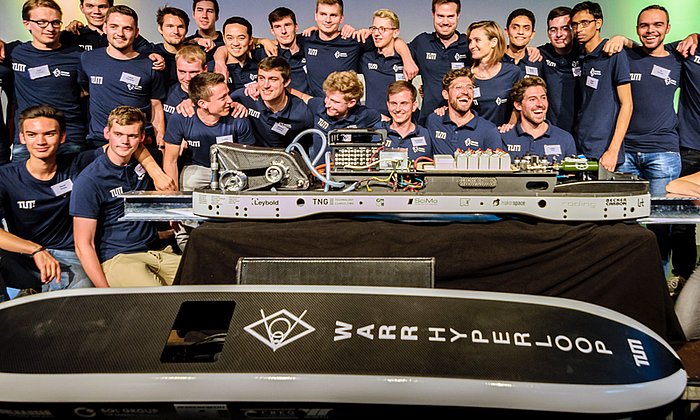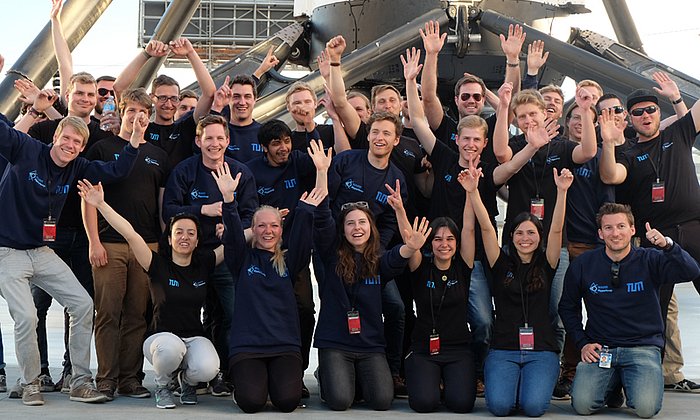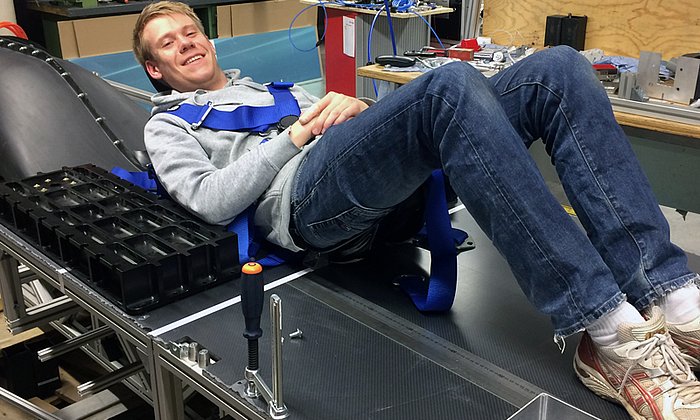TUM Hyperloop presents new prototype
"The result of four years of evolution"
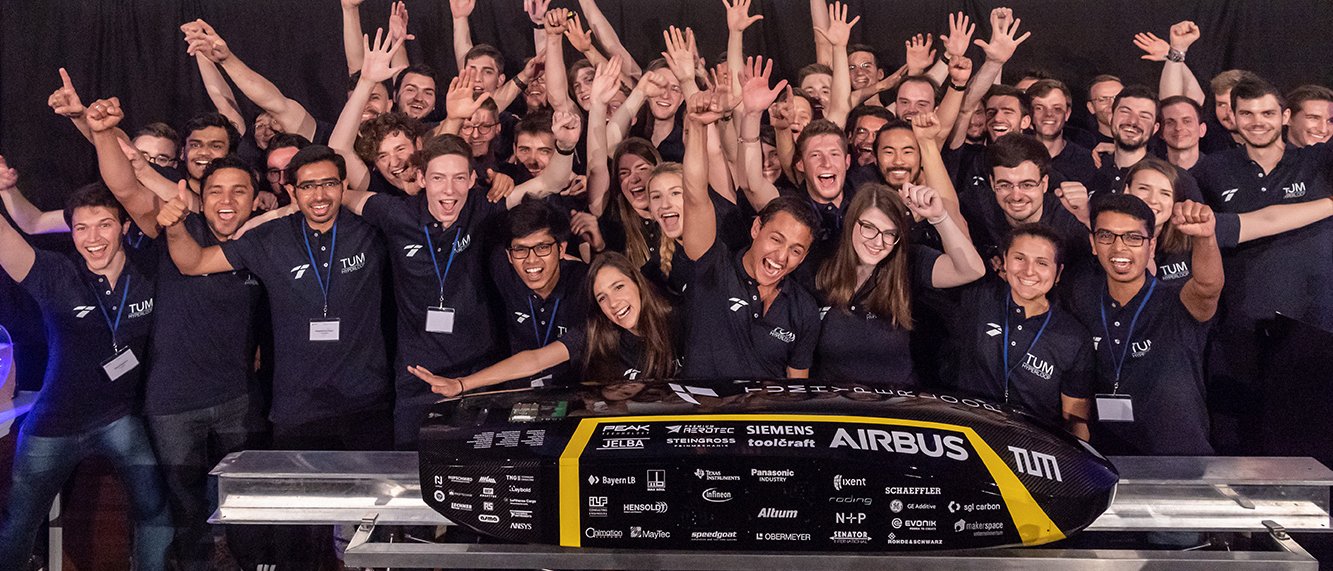
The fourth pod made by the TUM students is almost 1.70 meters long, 50 cm wide and weighs approximately 70 kilograms, even 8 kilograms lighter than its predecessor. Last year the previous pod clocked 467 kilometers per hour as it shot through the tube which had been especially constructed for the competition on the premises of the space travel company SpaceX in Los Angeles. "This year we plan to reach at least half the speed of sound, over 600 kilometers per hour," says Team Manager Toni Jukic.
This year's model is based on the concept used last year, according to Johannes Ungar, the team's Mechanical Lead. After plenty of fine tuning the prototype now has a maximum power output of 320 kilowatts, twice as much as the third prototype. "We've optimized the subsystems and are using stronger components, for example the batteries. The lithium polymer cells we're using are very high-performance and save weight." Another new feature is the brake system, developed by the "Racing Team" of 35 students. The system consists of four brakes which function independently of one another and react to malfunctions such as pressure loss.
"You could say the pod is the result of four years of evolution," says Jukic. "Each year we learned something new and put the knowledge into practice." The new team members are also applying the experience of former TUM Hyperloop experimenters, some of whom are still advising the team.
Levitation pod and tube system
And the students have set their sights on yet another ambitious goal: They're no longer concentrating on speed alone. The Research Team, consisting of 15 students, is researching the concept of the Hyperloop in terms of viability, sustainability and cost-efficiency. In addition to the pod that will compete in the upcoming race, the Research Team is building a second pod with a functional levitation system. The students already presented their own levitation system last year, which they have now improved. The students are also working on a ring track of ultra-high-strength concrete which currently consists of 14 segments and has a diameter of five meters.
"The system is to gradually develop to full scale," says Jukic. The students also hope to be able to present the second pod and the concrete tube in Los Angeles.
The team will also be sporting a new name when it enters this year's competition in Los Angeles on July 21: TUM Hyperloop (and no longer WARR Hyperloop). The reason: The team is no longer a part of the WARR student group; it is now a part of the newly founded association "NEXT Prototypes".
TUM fosters the TUM Hyperloop team
TUM supported the students financially in the development of their prototypes. In addition, the TUM Hyperloop team was given access to MakerSpace, the high-tech workshop of UnternehmerTUM, the center for innovation and founding, to build their prototype.
- TUM Hyperloop Team: tumhyperloop.de
- TUM Hyperloop on Facebook: https://www.facebook.com/TUMHyperloop/
- Photos on Flickr (Credit: TUM Hyperloop Team): https://www.flickr.com/photos/148755431@N04/
- Videos on YouTube: https://www.youtube.com/channel/UCWsP2oiB6Gq_s0E6r2T2RSQ
- Guest server with additional material: guest.next-prototypes.de
Photos for editorial use:
mediatum.ub.tum.de/1506716
Technical University of Munich
Corporate Communications Center
- Stefanie Reiffert
- stefanie.reiffert@tum.de
- +49 89 289 10519
- presse@tum.de
- Teamwebsite
Contacts to this article:
TUM Hyperloop Team Management
Mr. Toni Jukic, Mr. Johannes Ungar
tumhyperloop@next-prototypes.de
+49 (0) 89 289 52726
